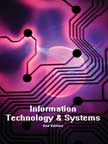Information Technology & Systems
 |
Details
Textbook Edition: II
Pages : 490;
Paperback;
210 X 275 mm approx.
Detail Table of Contents
Workbook Edition: II
Pages : 231; Paperback;
210 X 275 mm approx.
Pricing
Textbook Price: Rs. 900;
Workbook Price: Rs. 700;
Available only in INDIA
<< Management Information Systems
Program Design & Programming Languages : Chapter 7
SUMMARY:
Computer software is a set of programming instructions. Before starting coding, programmers must understand the user requirements and the flow of logic of the program.
|
|
Programming languages generally fall into two categories – low-level languages and high-level languages. Machine languages and assembly languages are low-level languages. Low-level languages are hardware friendly.
|
First generation languages and second generation languages are regarded as low
level languages, whereas the languages of higher generations are regarded as
high-level languages.
A machine language consists of binary numbers (0s and 1s) which respond directly to the on and off electrical pulses generated by the computer.
|
Different types of programming languages serve different purposes. Some of the programming languages which are popularly used include COBOL, BASIC, Pascal, C, Ada, C++, Visual Basic and Java.
Object-oriented programming is a programming technique designed to provide component reusability. The basic concepts of object-oriented programming are objects and classes, abstraction, encapsulation, polymorphism, and inheritance.
Related Books:-
 Case Studies in IT and Systems
Case Studies in IT and Systems
263 pages, Paperback
Available only in INDIA

